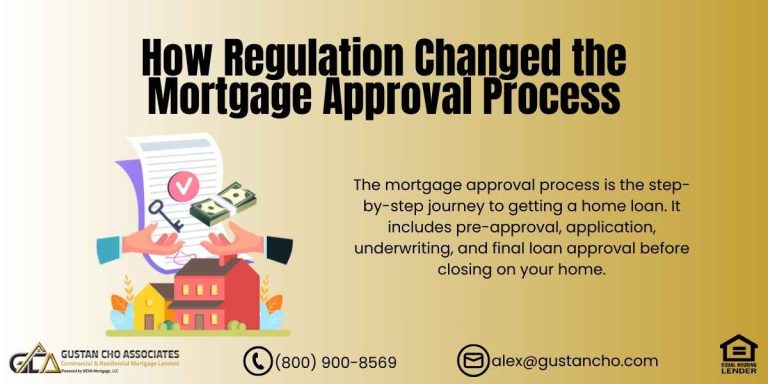This Article Is About How Mortgage Regulations Affect Home Buyers
The 2008 housing bubble and crisis hit the nation hard. Home prices were skyrocketing year after year like an out-of-control rocket with no housing market correction in years. Then the inevitable happened. The housing market collapse and mortgage meltdown. We are experiencing a housing market boom. Home prices are skyrocketing like never before. Home prices have been skyrocketing since 2013 with no signs of a correction. Just last year, the housing market has skyrocketed 14%. That is correct, folks. A 14% increase in the price of homes in just 12 months. Mortgage agencies HUD, VA, USDA, Fannie Mae, Freddie Mac are definitely concerned with the out-of-control skyrocketing home prices. This is why HUD has lowered the maximum loan to value from 85% to 80% loan to value on cash-out refinance FHA loans. The Veterans Administration did the same thing. VA lowered the maximum loan to value on cash-out refinance VA loans from 100% LTV to 90% loan to value. The sudden appreciation in home values is causing somewhat of a concern for mortgage agencies. Fannie Mae and Freddie Mac have tightened lending and credit requirements in being able to get an approve/eligible per automated underwriting system. Fannie Mae and Freddie Mac also have added rigorous loan level pricing adjustments on second homes and investment properties. In this article, we will discuss and cover how mortgage regulations affect homebuyers in 2021.
Mortgage Regulations And Overhaul After The 2008 Financial Crisis
The mortgage industry has gone through a major overhaul since the implementation of new mortgage rules and regulations after the financial meltdown of 2008. Half the country’s mortgage originators left the business. All mortgage loan originators had to get tested and undergo federal and state criminal background checks as well as financial and credit background checks. Top mortgage loan officers with criminal records were forced out of the mortgage industry due to new mortgage regulations. The SAFE ACT was created and implemented. Dodd-Frank was created and implements. NMLS was launched. The mortgage lending environment has gotten tougher and tougher year after year. 2020 was a tough year in the mortgage industry but 2021 will be tougher. More rules and regulations will come into effect. 2021 will be more restrictive and stricter when it comes to residential mortgage loan origination, whether they are purchase loans or refinance loans.
How Mortgage Regulations Affect Home Buyers: Qualified Mortgage
A part on How Mortgage Regulations Affect Home Buyers in 2021 regulations is the Qualified Mortgage regulation that already has been created and launched:
- Qualified Mortgage, also known as QM, is also known as the Ability to Repay mortgage regulations and is part of the controversial Dodd-Frank mortgage act
- Qualified Mortgage ( QM ) mortgage regulations are implemented by the CFPB, the newly created Consumer Financial Protection Bureau
- The CFPB will be a pioneer in trying to be the first regulatory agency to ever attempt at setting mortgage regulations and rules in establishing a uniform standard for qualifying borrowers for residential mortgages
- A big part of the Qualified Mortgage regulation and the rule is lowering and capping the back end debt to income ratio at the 43% level for conventional mortgage loans
- Currently, depending on how strong the mortgage loan borrower is, the cap on the back end debt to income ratios can be between 45% to 49.99% depending on what DU Findings say
This lower cap of 43% will hurt mortgage loan borrowers and decreasing their buying power and eventually could hurt the housing market.
New Mortgage Regulations In 2021 Loan Limits On FHA Insured Mortgage Loans
FHA and conventional mortgage loan maximum limits have increased for the past 5 years due to homebuyers not being priced out of the housing market. Even with the increase in FHA and Conforming loan limits for 2021, many homebuyers are still priced out of the housing market due to skyrocketing home prices.
- California mortgage loan borrowers will probably be the most hard-hit.
- For example, San Francisco and the Bay Area has always been a high priced home area
- For 2021, the maximum loan amount in high-cost areas is $822,375
- Rising home prices and lowering the FHA loan limits in high-cost areas, will limit thousands of people from becoming homeowners in high-cost areas as well as other areas
Higher costs in Guarantee Fees:
Guarantee fees, also known as G-fees on Fannie Mae and Freddie Mac mortgage loans will spike up by 11 basis points. This date was released by the Federal Housing Finance Agency, also known as the FHFA. The Guarantee fees are normally escrowed into a fund and used to insure losses incurred by both Fannie Mae and Freddie Mac. The unfortunate part of the spike in the G-fees, also known as the Guarantee fee, is that the ultimate parties that pay for this are the borrowers. This is because the cost of originating loans becomes much more costly.
Loan Estimates And Closing Disclosures And How Mortgage Regulations Affect Home Buyers
The old Good Faith Estimate (GFE) was replaced by the newly created Loan Estimate (LE). The Loan Estimate needs to be disclosed to borrowers no later than three days after the borrower applying for a loan. Fees and costs on the LE are estimates and most likely overly disclosed. Lenders are allowed to over-disclose but cannot under disclose closing costs that a borrower may incur. This is so although the lender has nothing to do with closing costs. If the borrower has been under-disclosed of 10% or more, the lender needs to pay for the shortage of disclosure even though the lender has no benefit or profit from the under-disclosed closing costs. With Closing Disclosures (CD), the final figures are stated on the CD. The CD is the replacement of the old HUD-1 Settlement Statement. Borrowers need to wait three days from the date of CD has been issued and acknowledged.
Potential Mortgage Rates Spike In 2021
Interest rates have been at historical lows due to the fact that the Federal Reserve has been purchasing mortgage-backed securities, also known as MBS. How Mortgage Regulations Affect Home Buyers in 2020 is yet to be seen. Common sense dictates that the Federal Board does not have a blank check and cannot continue purchasing Mortgage Backed Securities indefinitely. When the Feds begin tapering off in buying Mortgage-Backed Securities, which most likely happen in 2020, you can bet that mortgage rates will start rising. News and rumors of the Feds slowing in buying Mortgage Backed Securities a few months ago this year spiked up mortgage rates by more than 1% in a matter of several weeks. This can happen and we can all expect mortgage rates surpassing the 4% mark, possibly north of 5% if the Federal Reserve Board increases rates due to inflation.
Bottom Line
The bottom line, there is no need to panic. Worst case scenario, mortgage rates will increase and loan limits will decrease. Getting a mortgage loan approval might be slightly tougher. But we will still be originating loans and home buyers will eventually close on their dream home.
Non-QM Loans And Alternative Financing
Non-QM Loans and Bank Statement Mortgage Loans For Self Employed Borrowers will be more popular in 2020. Gustan Cho Associates is a mortgage company licensed in multiple states with no lender overlays on government and conventional loans. We have launched our NON-QM Loan Program in 2020. Our Bank Statement Mortgage Loan Program For Self Employed Borrowers.
NON-QM Loans have no waiting period after the following:
- Foreclosure
- Deed In Lieu Of Foreclosure
- Short Sale
- No Waiting Period After Chapter 7 Bankruptcy
- 10% to 20% down payment is required
- To qualify for a 10% down payment, borrowers credit scores need to be 720 FICO
- 680 credit scores require a 15% down payment
- 640 credit scores for a 20% down payment
Bank Statement Mortgage Loans For Self Employed Borrowers benefit self-employed borrowers who do not show enough income on their income taxes due to write-offs:
- With Bank Statement Loans, borrowers 12 months bank statement deposits are averaged and used as their monthly income
- With business bank statements, 50% of the bank deposits are averaged over the previous 24 months
- With personal bank statements, 100% of the bank deposits are used
- 20% down payment is required
Qualifying For Mortgage With Direct Lender With No Overlays
Borrowers who need to qualify for a mortgage with a direct lender with no overlays can contact us at Gustan Cho Associates at 800-900-8569 or text us for a faster response. or email us at gcho@gustancho.com. Gustan Cho Associates is licensed in multiple states and are available 7 days a week, evenings, weekends, and holidays.








